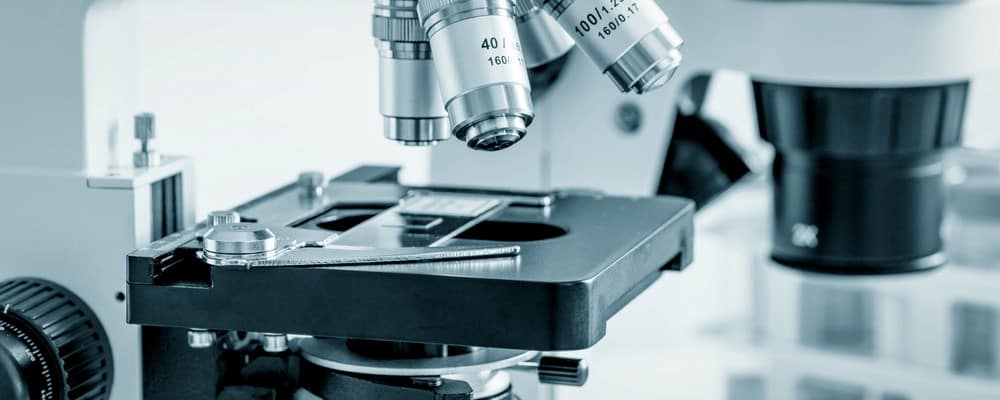In the scientific world, the microscope is an enormously helpful and practical tool. Professional scientists and amateurs use the microscope to examine microscopic life, tiny bits of matter, and other things too small to be identified, examined, or analyzed with the naked eye. The invention of the microscope allowed for all sorts of scientific discoveries. Without it, many scientific advancements would’ve been impossible. However, what’s the deal with the dissecting microscope, and why are there so many different kinds of microscopes to begin with?
Contents
The Dissecting Microscope’s Primary Purpose
While your average light microscope was designed for viewing flat objects pressed between two glass slides, the dissecting microscope was made to be slightly different. As its name would suggest, it aims to give its user the ability to delve deep into the contents of an object.
Because it allows the user to dissect a three-dimensional object visually, the dissecting microscope is ideal for scientists and amateurs who want a closer look at dissected samples that might be otherwise hard to view.

How Does a Dissecting Microscope Work?
Dissecting microscopes are designed differently than your average microscope. While the viewing mechanisms, lenses, and light source are all similar functionally, the significant differences come when we examine how exactly the dissecting microscope presents images to the viewer.
The dissecting microscope, also known as a stereo microscope or stereoscopic microscope, uses a relatively low magnification power to display an object to its user. It does this by displaying an image of an object using the light source reflected off the object’s surface. This starkly contrasts with a regular microscope, which views the light reflected off the specimen or subject itself.
What Parts Make Up a Dissecting Microscope?
The parts that make up your standard dissecting microscope will vary from device to device, but the general components will almost always remain the same. They include the following pieces:
- Eyepiece lens
- Diopter
- Cord
- Stereo head
- Zoom knob
- Focus knob
- Top light switch
- Arm
- Objective lens
- Bottom light
- Base
- Stage clip
- Stage plate
The eyepiece allows you to peer down and see the small specimen directly after exposure to light. These pieces are seen on modern microscopes – older versions of the dissecting microscope would have far different eyepieces or a single eyepiece for viewing purposes.
The zoom magnification and focus knobs allow users to adjust the lens to ascertain a clearer picture of whatever sample is being shown. By adjusting the distance of the specimen from the lens, these knobs allow users to zoom in on specific parts of a specimen or see particular parts of it in clearer detail.
The base, stage clip, and stage plate aren’t the most fascinating part of this microscope, but they are important for stabilization purposes. A wonky, unbalanced microscope is essentially a useless tool. These parts allow users to know that their microscope has a secure base.

Different Kinds of Dissecting Microscopes
Now, there are a variety of different dissecting microscopes that you’re likely to encounter in either a professional or amateur environment. These tools are incredibly varied in terms of what kinds of lenses they might be equipped with, the type of lighting they might use, and the degree of total magnification they might offer.
Knowing this information can better prepare you for an encounter with a dissecting microscope. It will also serve you well when deciphering exactly what kind of microscope you’ve encountered. Here are the major types of microscopes you’re likely to see:
- Stereo zoom boom stand microscopes
- Dual power dissecting microscope
- Single power stereo dissecting microscope
- Digital tablet dissecting microscope
- Stereo zoom dissecting microscope
- Single-magnification pocket microscope
If you come across any of these types of microscopes, you’ll likely be in an environment that will be preparing for how to handle them in specific circumstances, so we won’t break down each of their uses. However, this simple list does a lot to show just how varied microscopes can get and how specific a use each type might have.

Understanding the Dissecting Microscope
We hope this little breakdown proved helpful to you. This piece of scientific equipment was undoubtedly a marvel when it was first introduced to the scientific world, and it remains a crucial piece of observational equipment.
Used in classrooms, laboratories, and homes all around the globe, dissecting microscopes aid us in breaking down our world into more easily digestible pieces. We here at Optical Mechanics sincerely hope you walk away from reading this piece with a more comprehensive view of how dissecting microscopes function and why they’re so integral to many scientific processes.

